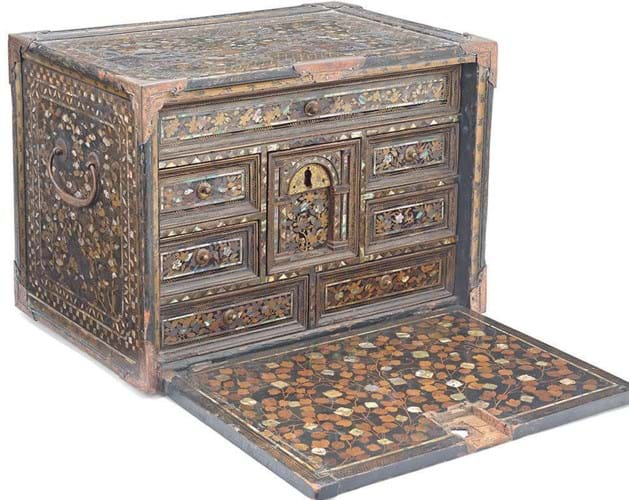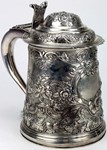A Japanese Momoyama nanban lacquer cabinet mounted with gilt copper and inlaid with shell sold at £12,000 at Bonhams Edinburgh (27.5% buyer’s premium) on February 2.
Nanban, meaning ‘southern barbarians’, originally referred to other Japanese but was applied to all foreigners – Portuguese, Spanish and Dutch merchants – in the years before Edo isolationism.
Civil wars raged over these decades but the arts flourished as Western buyers clamoured to trade in lacquer wares in particular.
Standing 12½in high x 17½in wide (32 x 44.5cm) and embellished predominantly in gold hiramaki-é lacquer, this cabinet was decorated with phoenixes, flowering trees and buildings.
The downward opening door revealed a similarly profusely decorated fitted interior.
Estimated at £5000-6000, it sold to a Continental private buyer.
See Art Market, ATG No 2581, for more highlights from Meldon Park.
Key reference
In order to try and recreate the effect of imported Oriental lacquer work, European cabinet makers turned to John Stalker and George Parker’s 1688 publication Treatise of Japanning and Varnishing.
The book soon became a key reference work, since it contained not only recipes for producing the various different colours but also patterns of Chinese figures, plants and gardens which could be adapted as necessary.
‘Japanning’ was approaching the peak of fashion when the 2ft 4in (70cm) wide casket or coffres forts also offered at Bonhams - as part of the Connoisseur’s Library Sale held on February 7-8 - was made in c.1690.
Decorated to the doors with exotic flowers, birds, foliage and butterflies, it is mounted in ormolu and veneered inside in rosewood.
These strongboxes are European in concept and many were made on the continent. However, there are documented examples made in England including some made by the Dutch or Flemish cabinetmaker Gerrit Jensen (fl.1667-d.1715), who worked in London.
Offered on a modern stand, this japanned example dating to the James II or William and Mary period sold for £12,000 (estimate £1500-2500).
















